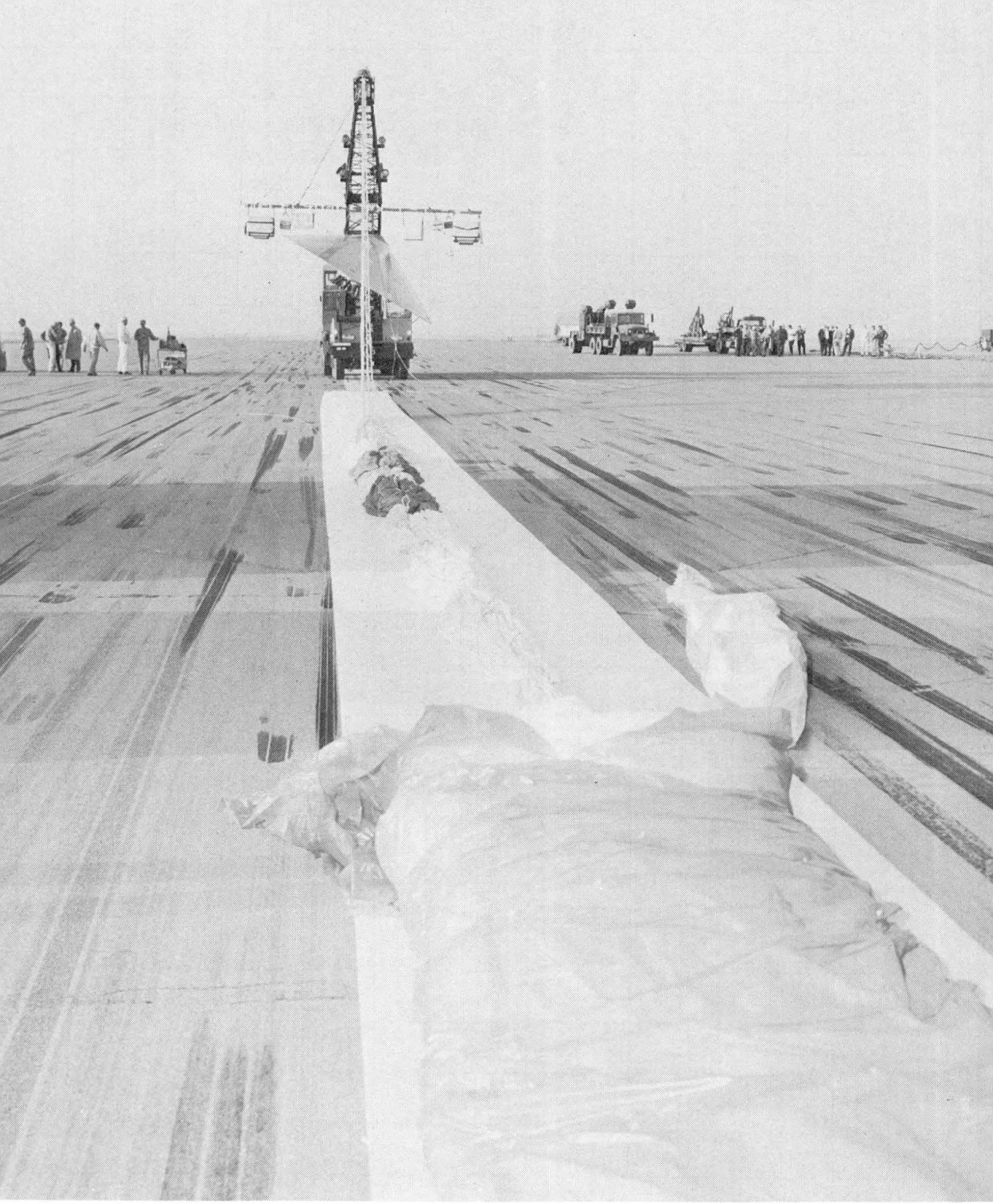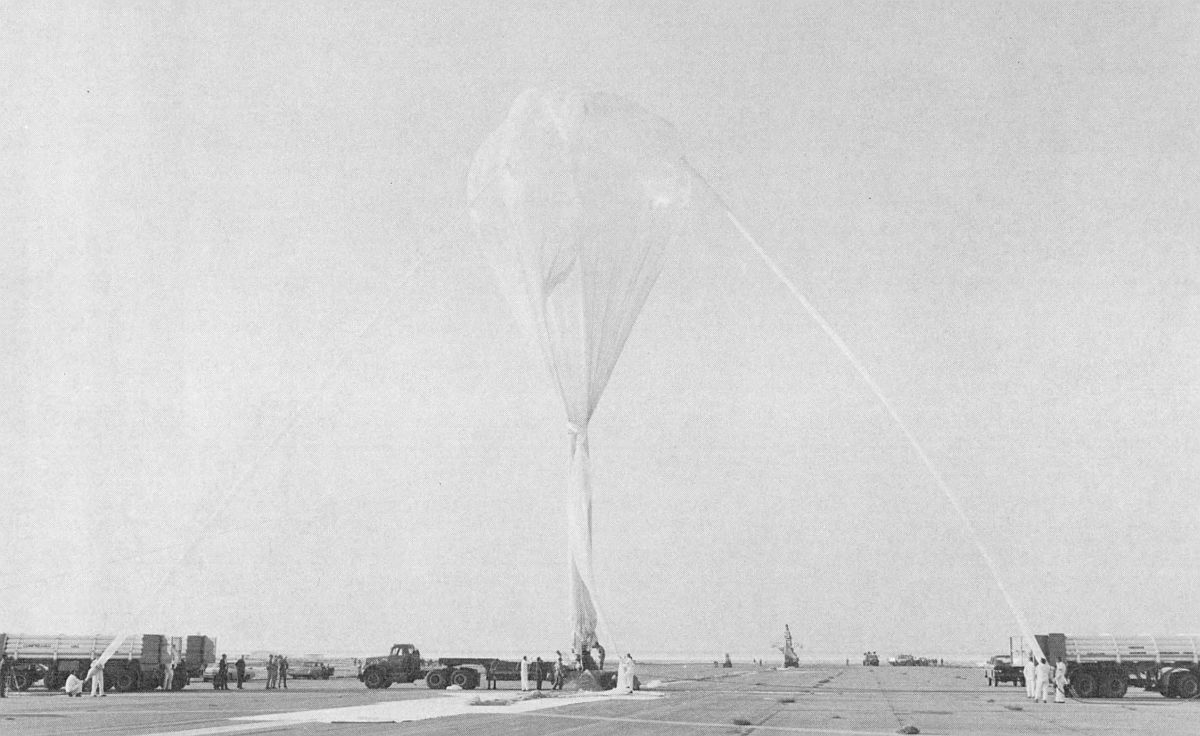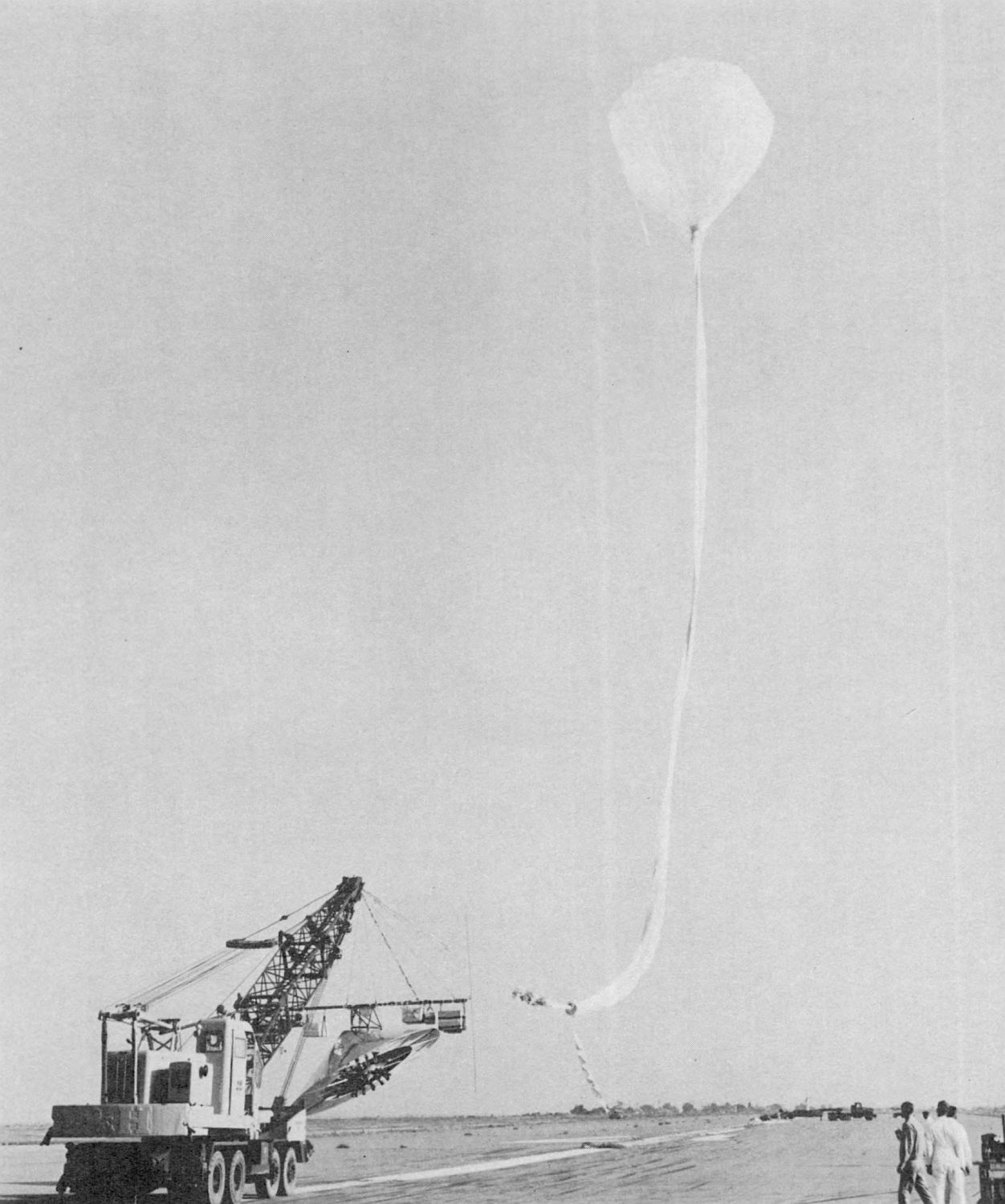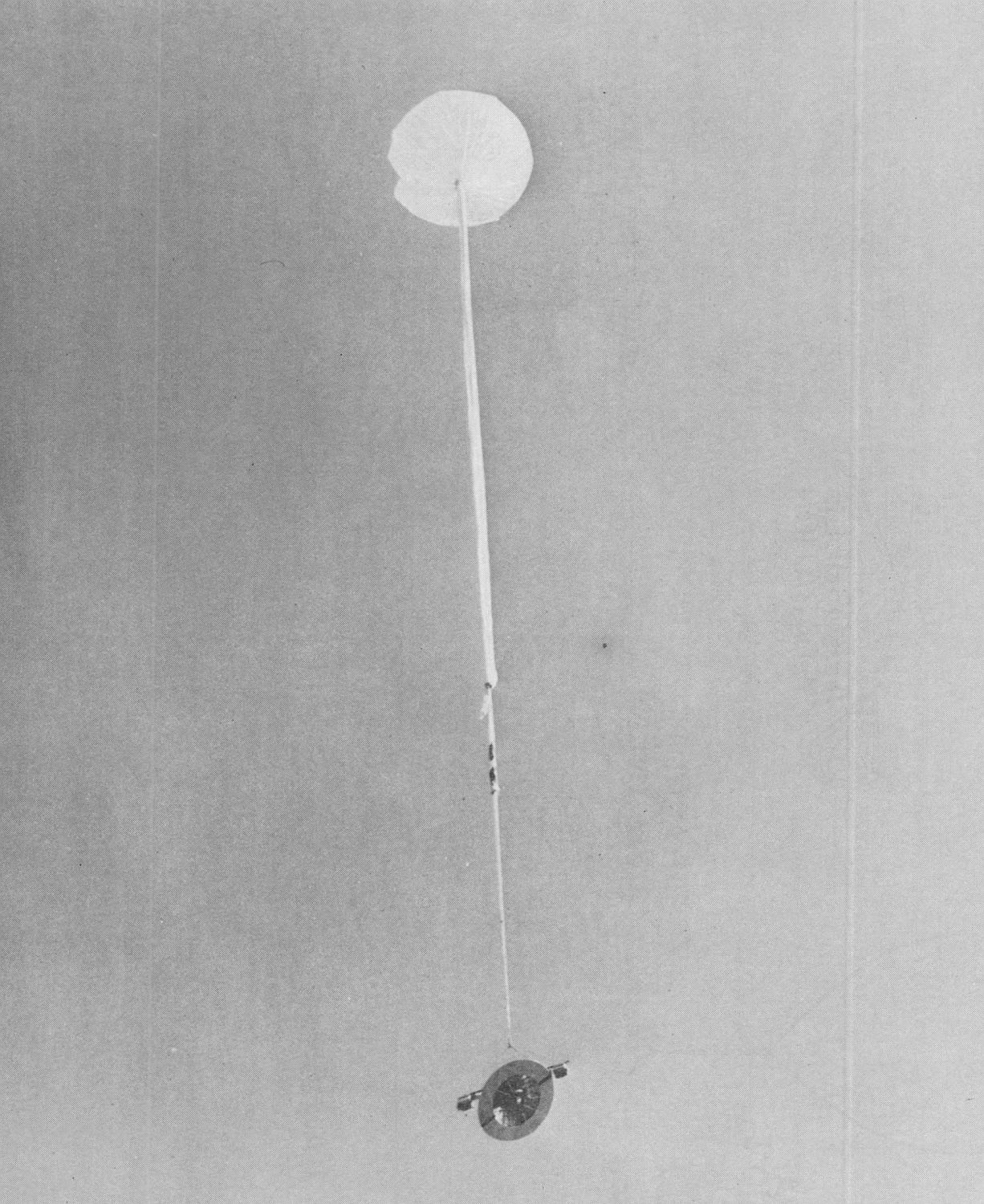Purpose of the flight and payload description
A saucer-shaped vehicle aimed to test the aerodynamic properties of the parachutes for the Voyager (later renamed Viking) Mars probes.
Launched by a stratospheric balloon after float altitude achieved, the vehicle was released and following seconds of free fall the solid fueled rockets (12 Falcon in one version or 8 Sword-1 motors in the other) ignited and accelerated the test vehicle upwards, simulating a Mars Atmosphere reentry trajectory.
At burn out the aeroshell was released from the dummy payload, which then unfurled the parachutes and landed.
This was the first test of the Aeroshell. Later on, the voyager program was cancelled, and replaced by the much smaller Viking project several years later.
Details of the balloon flight
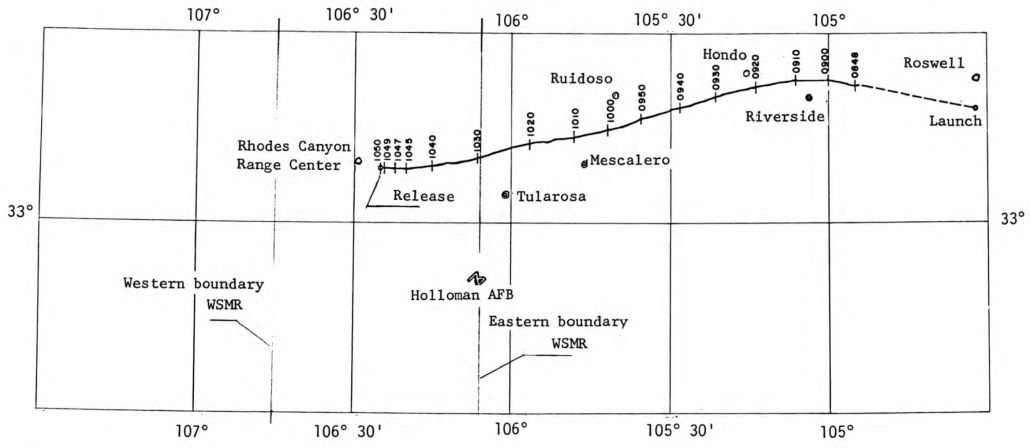
Balloon launched on: 8/30/1966 at 7:17 MST
Launch site: Roswell Industrial Air Center, New Mexico, US
Balloon launched by: Air Force Cambridge Research Laboratories (AFCRL)
Balloon manufacturer/size/composition: Zero Pressure Balloon Schjeldahl Co. (Tandem) 26.000.000 cuft (GT-111-1)
Flight identification number: H66-76
End of flight (L for landing time, W for last contact, otherwise termination time): 8/30/1966
Balloon flight duration (F: time at float only, otherwise total flight time in d:days / h:hours or m:minutes - ): 3 h 25 m
Landing site: In the White Sands Missile Range, in the center of the so called "50 mile area", New Mexico, US
Payload weight: 3562 lbs
After launch the balloon take a southerly path and passed over the Sacramento Mountains. Then flown over the White Sands Missile Range, and when the balloon was 3 miles northwest of the center of the so called "50 mile area" the Aeroshell was released.
Then the vehicle ignited their own rockets and started a ballistic flight (see upper image at left).
After the fuel run out the system deployed the parachute and began the funal descent phase.
At left a map of the trajectory of all support flights of the PEPP program. The flight path of the balloon carriying the Aeroshell is the marked with the number 4.
External references
- Balloon Development for the Planetary Entry Parachute Program 4th AFCRL Scientific Balloon Symposium, September 1966, pp 11-18
- Balloon Flight Record Facilities for Atmospheric Research Nº 2, Winter 1966/67
- Flight test of a 15-foot-diameter (4.6-meter) 120º conical spacecraft simulating parachute deployment in a Mars atmosphere NASA Technical Note Nº D-4266 (1967)
- Peter Alway's web site (via Archive.Org)
- Vehicle attitude determination with a single onboard camera NASA Technical Note Nº D-4359 (1968)
1776If you consider this website interesting or useful, you can help me to keep it up and running with a small donation to cover the operational costs. Just the equivalent of the price of a cup of coffee helps a lot.


